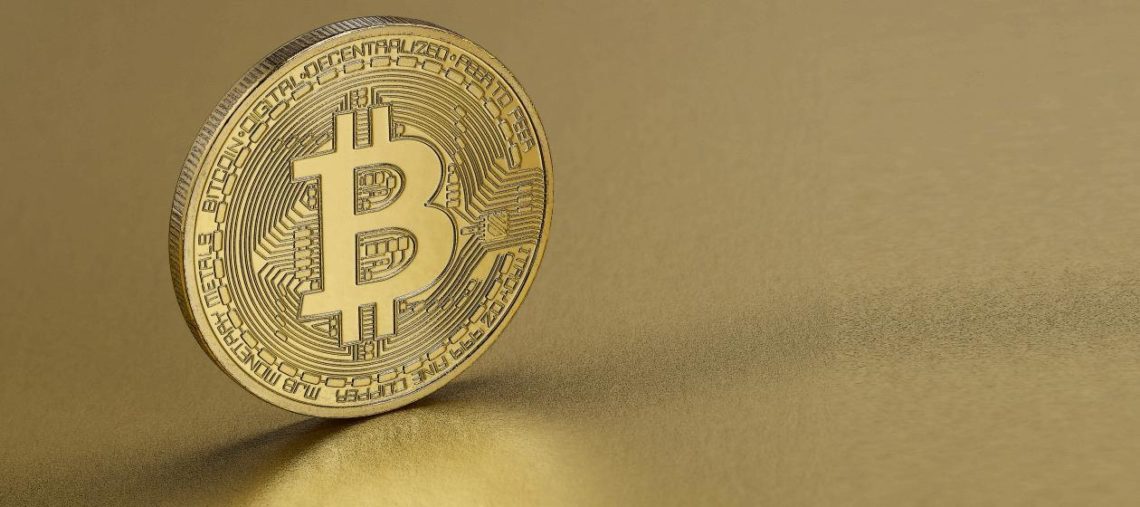A single bitcoin is now worth more than an ounce of gold.
The digital currency crossed that threshold for the first time last Thursday, and at one point on Friday it was trading at $1,292.71 — compared to gold at $1,226.89.
Of course, as Quartz noted, “the milestone is inherently arbitrary.” If gold was measured by a different unit of weight, its value could be higher or lower. But the symbolism is still significant. An ounce of gold holds a special place in our popular imagination.
And it’s an impressive mark for bitcoin to surpass. Back in late 2013, the value of a bitcoin came close to $1,200 — but then it crashed spectacularly to $600 in almost no time at all. It briefly stabilized at $800, then it went into a slo-mo slide back to $200 over the course of 2014. Lots of observers wrote off the virtual currency as a failed experiment.
Now bitcoin is back, in defiance of the naysayers. To what do we owe its resurrection? To answer that question, let’s go back to bitcoin’s beginning.
Bitcoin — a highly encrypted form of digital currency — was founded on a certain renegade libertarian romanticism. It wasn’t controlled by a powerful central government, but by a decentralized network of participants. By 2013, 70 percent of all bitcoin trading went through an exchange called Mt. Gox, founded in Tokyo in 2010 as a way for investors to trade bitcoin for real currencies.
Mt. Gox’s CEO, Mark Karpeles, was neck deep in the romanticism of bitcoin. And while Karpeles was, by all accounts, a brilliant software entrepreneur, he also didn’t understand the basic security features and best practices your standard financial or software firm uses to protect itself. Sure enough, a massive raid by hackers effectively bankrupted the company in late 2013. That was a huge factor in bitcoin’s near-demise.
But the other issue was just that bitcoin was young. Even now, while abitcoin may be more valuable than an ounce of gold, the amount of economic activity in the world that involves gold is still vastly greater. The total global gold supply adds up to $7 trillion. Bitcoin’s total market value is just $20 billion. Bitcoin’s smaller economic reach means that the downfall of a massive player like Mt. Gox could torpedo the value of the whole currency.
Bitcoin’s resurrection has been more gradual than its initial rise. Bitcoin began bouncing back in mid-2015, and didn’t cross the $1,200 threshold until just a few days ago. By contrast, its spike in 2013 from $200 to $1,200 only took a month or two. Today’s relatively slower rise is likely a sign that the currency is less a hot new flash in the pan, and actually something gaining credibility with more mainstream institutions.
For instance, there are already exchange traded funds (ETFs) for bitcoin on some financial markets. These instruments allow investors to buy bitcoins without going through the tech-savvy rigamarole of maintaining their own bitcoin account. They just invest their money in the ETF, and the fund handles the rest. Later this month, the Securities and Exchange Commission is expected to make a decision whether such on ETF can be sold on the American financial markets.
Another factor in bitcoin’s resurrection: the geopolitical turmoil created by Brexit and Donald Trump. Chaos and unrest — particularly when it has an anti-elitist, populist bent — drives rich people to panic and look for a safe place to stash their money. Gold-standard style investments like bitcoin (or, well, gold) can be pretty attractive to wealthy individuals who worry that currencies backed by governments might become increasingly unreliable when the government is headed by an erratic know-nothing.
But there’s yet another factor in bitcoin’s resurrection: And it has nothing to do with the virtual currency as a libertarian stateless alternative.
There’s also bitcoin the technology, which pioneered the blockchain as a method of digital record-keeping. This is the innovation that allows everyone using bitcoin to agree on how much currency each user has and what transactions they’ve undertaken — all without any centralized financial system keeping track of things.
That innovation has lots of traditional industries and investors pretty excited. Wall Street is an obvious candidate for adopting blockchain technology. But its potential applications are far wider. As the BBC pointed out, you could imagine something as mundane as dentists using blockchain to maintain medical records. A lot of the enthusiasm driving up bitcoin’s value is enthusiasm for bitcoin’s technology, not its currency.
Under pressure to expand its reach, will bitcoin give up its renegade libertarian ways? Or will mainstream industries and players just copycat the blockchain technology, leaving bitcoin a boutique investment for well-to-do survivalists? Only time will tell.
Source: http://theweek.com/articles/683640/rise-fall-rise-bitcoin







